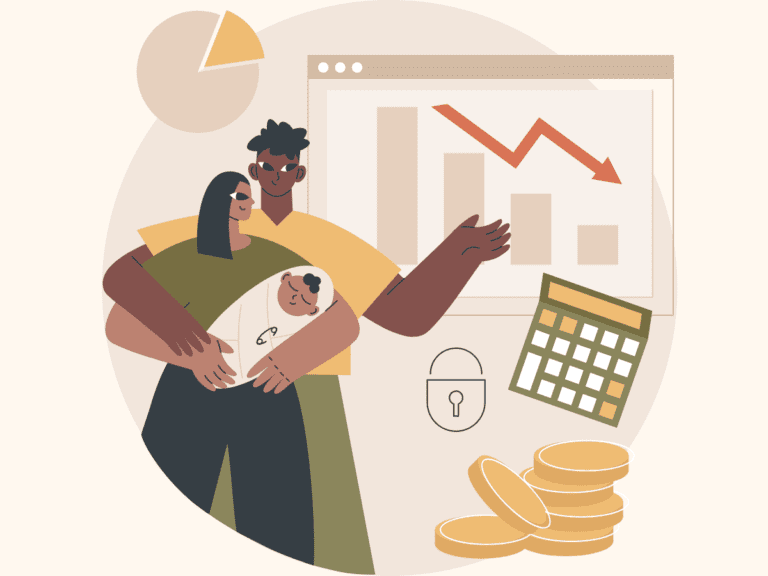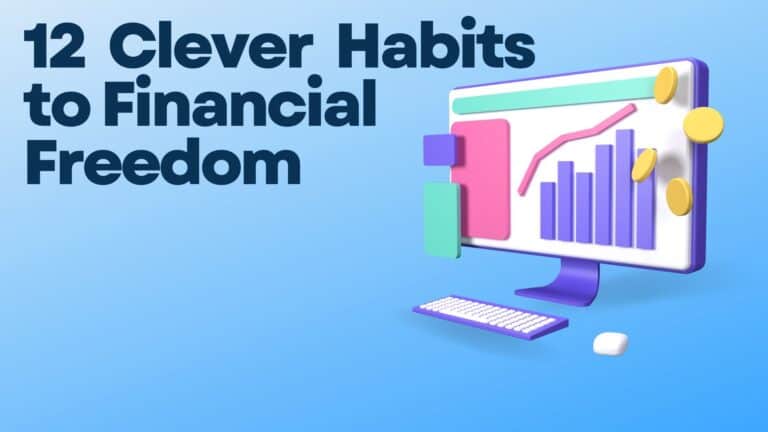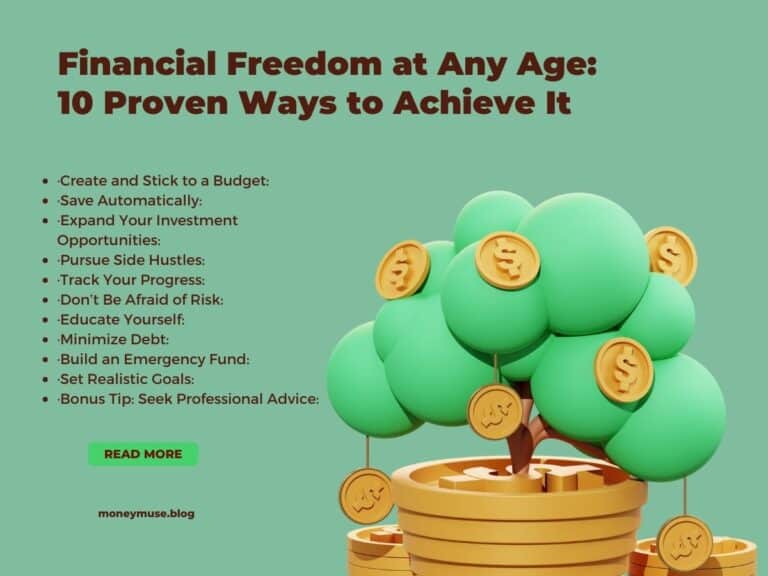Broke to Bulletproof: How Ordinary People Are Creating Unshakeable Financial Security
In a world where 64% of Americans live paycheck to paycheck (source: LendingClub), achieving financial security might seem like an impossible dream. But what if there was a framework that could transform your financial life, regardless of your starting point? Enter the F.R.E.E.D.O.M Framework – a revolutionary approach that’s helping ordinary people build extraordinary wealth.
Introduction: The Financial Security Revolution
Imagine waking up without money worries, knowing your financial future is secure. This isn’t just a fantasy – it’s becoming a reality for those who embrace the F.R.E.E.D.O.M Framework. Let’s dive into how this innovative approach is changing lives.
The F.R.E.E.D.O.M Framework: Your Roadmap to Financial Security
Our groundbreaking F.R.E.E.D.O.M Framework is designed to help you achieve financial flexibility without the stress often associated with traditional wealth-building strategies:
- F: Flexibility – Adapt to life’s curveballs
- R: Resourcefulness – Maximize your current resources
- E: Education – Continuously expand your financial knowledge
- E: Efficiency – Streamline your financial processes
- D: Discipline – Cultivate unshakeable financial habits
- O: Opportunities – Recognize and seize financial potential
- M: Mindset – Develop a growth-oriented money attitude
Case Study: Sarah’s F.R.E.E.D.O.M Journey
Sarah, a 32-year-old teacher, transformed her finances using the F.R.E.E.D.O.M Framework. Here’s her story:
- Starting point: $45,000 salary, $30,000 in debt, no savings
- Flexibility: Created multiple income streams through tutoring and an educational blog
- Resourcefulness: Used the debt avalanche method to tackle high-interest debt first
- Education: Invested 30 minutes daily in financial education through podcasts and books
- Efficiency: Automated savings and bill payments to streamline her finances
- Discipline: Stuck to a 50/30/20 budget (needs/wants/savings) for 24 months straight
- Opportunities: Negotiated a 15% salary increase and invested the difference
- Mindset: Shifted from a scarcity to an abundance mentality
Result after 3 years:
- Debt-free
- $50,000 in savings and investments
- 20% increase in overall income
The Wealth-Building Trifecta: Income, Investments, and Innovation
1. Diversify Your Income
Did you know that the average millionaire has seven streams of income? Here’s how you can start building yours:
- Side hustles (e.g., freelancing, consulting)
- Passive income (e.g., rental properties, dividend stocks)
- Business ventures
- Investments
2. Smart Investing Strategies
“The best time to plant a tree was 20 years ago. The second best time is now.” – Chinese Proverb
This wisdom applies perfectly to investing. Here’s a comprehensive guide to get you started:
a) Asset Allocation:
- Stocks: Higher risk, higher potential returns
- Bonds: Lower risk, stable income
- Real Estate: Tangible assets with potential for appreciation
- Cash: Liquidity for opportunities and emergencies
b) Risk Management:
- Diversification across asset classes and geographical regions
- Regular portfolio rebalancing
- Stop-loss orders to limit potential losses
c) Researching Investments:
- Fundamental analysis: Evaluating a company’s financial health
- Technical analysis: Studying price trends and patterns
- Economic indicators: Understanding broader market influences
Expert Tip: “The biggest risk of all is not taking one,” says Mellody Hobson, Co-CEO of Ariel Investments. “Start investing early and consistently, even if it’s with small amounts.”
3. Innovate Your Finances
Embrace cutting-edge financial tools to supercharge your wealth-building:
- Robo-advisors for automated, low-cost investing
- Blockchain-based decentralized finance (DeFi) for higher yields
- AI-powered budgeting apps for smarter spending decisions
Navigating Economic Headwinds
Your financial journey doesn’t happen in a vacuum. Here’s how to adapt your strategy to broader economic factors:
- Inflation: Invest in assets that historically outpace inflation, such as stocks and real estate.
- Recession: Build a robust emergency fund and consider defensive stocks.
- Market Volatility: Stay invested for the long term and avoid emotional decisions.
Cultural Perspectives on Wealth
Financial wisdom varies across cultures. Here are some diverse insights to enrich your financial strategy:
- Japanese Concept of ‘Chowa’: Balance in all aspects of life, including finances
- African Ubuntu Philosophy: “I am because we are” – emphasizing community support in wealth-building
- Scandinavian ‘Lagom’: “Just the right amount” – finding contentment while building wealth
Overcoming Financial Obstacles
Even with the best framework, challenges will arise. Here’s how to tackle common financial hurdles:
- Unexpected Expenses:
- Solution: Build an emergency fund covering 3-6 months of expenses
- Action Step: Automate a transfer of 5-10% of your income to a high-yield savings account
- Analysis Paralysis:
- Solution: Start small and adjust as you learn
- Action Step: Begin with a low-cost index fund investment of just $50/month
- Lifestyle Inflation:
- Solution: Practice conscious spending
- Action Step: Implement a 48-hour rule for non-essential purchases over $100
Your Next Steps: The 30-Day F.R.E.E.D.O.M Challenge
Ready to transform your finances? Take the 30-Day F.R.E.E.D.O.M Challenge:
Day 1-7: Track every expense Day 8-14: Create a realistic budget Day 15-21: Start a side hustle Day 22-28: Learn about and choose an investment vehicle Day 29-30: Set specific, measurable financial goals for the next 6 months
Conclusion: Your F.R.E.E.D.O.M Awaits
Financial security isn’t just for the elite – it’s for everyone who’s willing to embrace the F.R.E.E.D.O.M Framework. By focusing on Flexibility, Resourcefulness, Education, Efficiency, Discipline, Opportunities, and Mindset, you’re not just changing your finances – you’re transforming your life.
Remember, every financial decision you make is a step towards or away from your freedom. Choose wisely, act consistently, and watch as your financial reality transforms from broke to bulletproof.
Ready to start your journey? Share your first step in the comments below!
Glossary of Key Terms
- Asset Allocation: The practice of dividing investments among different asset categories
- Compound Interest: Interest calculated on the initial principal and accumulated interest
- Diversification: Spreading investments across various financial instruments to manage risk
- Emergency Fund: Savings set aside for unexpected expenses or financial emergencies
- Index Fund: A type of mutual fund with a portfolio constructed to match or track a market index
- Passive Income: Earnings derived from a rental property, limited partnership, or other enterprise in which a person is not actively involved
- Robo-Advisor: A digital platform that provides automated, algorithm-driven financial planning services
Additional Resources
Books:
- “Your Money or Your Life” by Vicki Robin
- “The Simple Path to Wealth” by JL Collins
- “Rich Dad Poor Dad” by Robert Kiyosaki
Websites:
- Mr. Money Mustache (www.mrmoneymustache.com)
- Investopedia (www.investopedia.com)
- NerdWallet (www.nerdwallet.com)
Apps:
- Mint (budgeting)
- Robinhood (investing)
- YNAB (You Need A Budget)
Remember, your journey to financial freedom starts with a single step. Take that step today, and let the F.R.E.E.D.O.M Framework guide you to a future of financial security and peace of mind.







